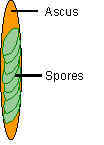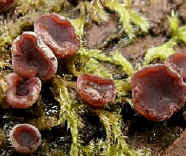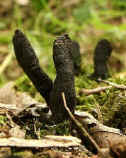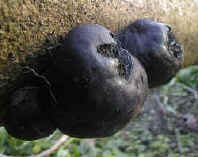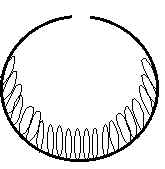Types of Fungi
(continued)
Ascomycetes
| Ascomycetes are 'spore shooters'. They are fungi which
produce microscopic spores inside special, elongated cells or sacs, known as 'asci', which
give the group its name. As the spores mature within an ascus, increasing fluid pressure
builds up inside until eventually the top bursts off, rapidly releasing the spores. In
some species, the spores may be shot out distances of up to 30cm. Ascomycetes are very varied. They can be identified from the fruiting bodies which bear the asci and the way in which the asci develop. |
|
Fungi with spores produced
inside a sac called an ascus. Each ascus usually contains 8 spores (sometimes 4, depending on the species) |
Asci are microscopic structures
More on Ascomycetes here
OR
Use your back button to return to your previous page.
